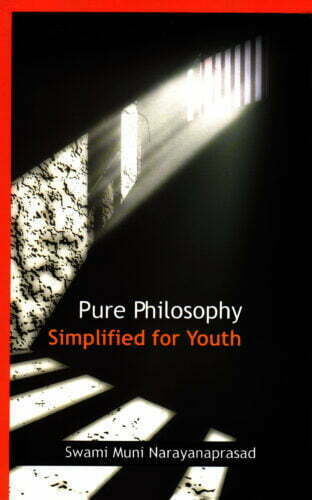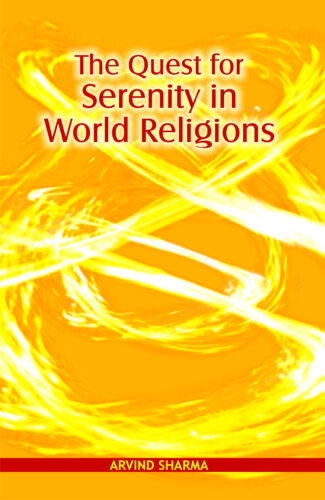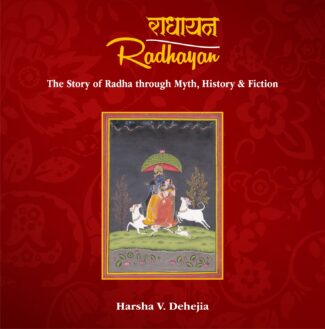Showing 761–770 of 1125 results

This, an authorised reprint of an annual bulletin of the Indian Archaeological Society, has been offering valuable informations, full with rich insights and innovative viewpoints, on the Indian archaeology that includes excavations, inscriptions, temples, mosques, iconic symbols, paintings, etc. This yearly bulletin is highly recommended for archaeologists, epigraphists, historians and research scholars besides the general readers having interest in such fields.
Puratattva is the annual bulletin of one of the worlds most prestigious academic organization, the Indian Archaeological Society which was founded as early as 1967. From the very beginning, the Society has aimed at publishing the results of the latest archaeological discoveries made in India. Those who have contributed to the journal over the years include not only the eminent archaeologists excavating major sites, like Professors H.D. Sankalia, B.B. Lal, B.P. Sinha, Krishna Deva, A.K. Narain, G.R. Sharma, M.N. Deshpande, B.K. Thapar, S.R. Rao, B.M. Pande, J.P. Joshi, M.C. Joshi, M.S. Nagaraja Rao, A. Sundara, K.N. Dikshit, V.N. Misra, Vibha Tripathi, Rakesh Tiwari, V.S. Wakankar, Giriraj Kishore, K.V. Raman, N.C. Ghosh, K.M. Srivastava, M.A. Dhaky, V.D. Mishra, M.K. Dhavalikar, R.S. Bisht, B.R. Mani, R.C. Agarwal, S.P. Gupta, R.K. Verma, J.N. Pal, U.V. Shinde, Rakesh Tiwari, Alok Tripathi, Amarendra Nath, D.N. Tripathi, Ajith Prasad, K.S. Ramchandran, D.V. Sharma, but also young and budding scholars brimming with new ideas and equipped with new scientific techniques, exploring practically every part of the country and preparing their research works for their Doctoral and post-Doctoral degrees. Scholars from universities and research institutions like the Banaras Hindu University, Madras University, Nagarjuna University, Utkal University, Allahabad University, Patna University, Calcutta University, Mysore University, Baroda University, Kurukshetra University, Rohtak University, Lucknow University, Gorakhpur University, Deccan College, Indian Archaeological Society and the Archaeological Survey of India, the largest body of archeologists in India, to name a few, have been engaged in extensive and intensive field-work in the country. They have been regularly contributing their research-papers to this journal. The subjects covered by these scholars include Stone Age cultures, including Neolithic Culture and the Rock Art, Bronze Age Culture and the Rock Art, Bronze Age Culture of the Harappans found in the Indus and Saraswati basins, Chalcolithinc cultures found in the Deccan, Malwa, Maharashtra, Bengal, Bihar, Madhya Pradesh and Uttar Pradesh, and Early Iron Age cultures, including the Megalithic Culture, throughout India. They also include topics like Underwater Archaeology, Epigraphy, Numismatics, Art, Architecture, Conservation of Monuments, Antiquarian Laws and International Conventions. Puratattva also contains Notes and News, Book Reviews and dialogues between scholars on various issues. So far as many as 34 volumes have been published which provide a mine of information, without referring to which no worthwhile research-work on Indian history and archaeology is at all possible. The articles include even those presented in the Annual Conferences of the Society. This is precisely the reason the Puratattva is consulted throughout the world to gather details on the progress of Indian archaeology and insights on Indian history and culture. It is indeed of permanent value for all scholars and all libraries in India and abroad.

An annual bulletin of the Indian Archaeological Society, has been offering for the last 33 years valuable informations, full with rich insights and innovative viewpoints, on the Indian archaeology that includes excavations, inscriptions, temples, mosques, iconic symbols, paintings, etc. This yearly bulletinis highly recommended for archaeologists, epigraphists, historians and research scholars besides the general readers having interest in such fields.
For detailed information please see Volume 1.
An annual bulletin of the Indian Archaeological Society, has been offering for the last 33 years valuable informations, full with rich insights and innovative viewpoints, on the Indian archaeology that includes excavations, inscriptions, temples, mosques, iconic symbols, paintings, etc. This yearly bulletinis highly recommended for archaeologists, epigraphists, historians and research scholars besides the general readers having interest in such fields.
For detailed information please see Volume 1.

A textbook meant for the youths, throws light on the problems and principles of virtuous life of a man. It talks about one’s existence, birth and death, some guidelines towards a virtuous life, self-restraint, right understanding, action, living, etc. Also speaks about some moral instructions, goal of life, religion and prayer, etc.
This small book was originally meant to be a textbook on Philosophy, to be used in undergraduate studies in all Indian universities, if made a compulsary subject. The compelling necessity of doing so is made clear in the Introduction. Even otherwise, all the educated youth will find this book useful as a guide in life. Fully grown-ups and even elders will find it beneficial to lead themselves and their children.
The first five chapters answer all the fundamental problems of life based simply on our common sense and love of truth. The next five chapters teach us how to live in the light of this understanding. The latter half also contains some of the universally acceptable moral teachings culled from world religions.

Examining the relation between religion and ecological concern in Hinduism, the book covers aspects like the ecological implications of pilgrimage, worship of earth and river goddesses, and Vedanta and Tantra theologies. It discusses how traditional ideas affect contemporary Indian thought.
Examining the relation between religion and ecological concern in Hinduism from textual, theological, anthropological, feminist, and eco-activist approaches, this volume brings together an international, interdisciplinary group of scholars. The book covers the most relevant aspects of the Hindu tradition, searching out the ecological implications of pilgrimage and sacred geography, earth and river goddesses, the beliefs and ritual practice of villagers, caste consciousness and Vedanta, Tantra, and Goddess theologies. The book considers, in a thoughtful and analytical way, a timely issue: how important and basic traditional ideas like asceticism, karma and rebirth, and purity and impurity influence contemporary Indian thinking about the environment. It has an impressive and diverse array of contributors, and there is a nice balance of theory and fieldwork. It shows well how India is sacred ground (and water).

Yoga is a serious and a comprehensive subject. It is difficult to bring completeness in it. Swami Shanti Dharmanand has tried to give the complete information on health and yoga beginning at its initial stage. Different forms of yogic postures with their health benefits have been mentioned in detail.
Yoga is a deep and extensive topic to explain, and attaining absolute perfection in it is extremely difficult. Swami Shantidharmananda Saraswati has however tried to enrich this concise book with complete information for a beginner, a patient and even for an expert. He has shed into it his intellect and experience of Upanishadic and literary sources matching with scientific research besides the basic knowledge obtained from his Guru and Rishis. Though this book has been written by taking ashtanga-yoga as a base, all types of asanas and procedures of yoga have been accommodated in a disciplined manner. Secrets of hathayoga, rajayoga, kriyayoga, japayoga, layayoga, kundalini yoga, nadayoga, svarayoga, etc. have been summarized in brief. This is the reason why it has been named as Purna Yoga. Since all the topics related to yoga have been divided into fifteen chapters, this book has been referred to as Yoga Pancadashi as well. Purna Yoga is a guide for a blissful life as well as a very useful tool for every individual in the society.
The book investigates some of the most discoursed conducts centring around the characters in the Mahabharata, concluding that these characters reinstate ‘purusartha’ (four basic aspects of human existence) and its relevance in shaping constructive social–political standards and assuring intellectual, emotional and spiritual evolution for individuals from all walks of life. Through rationalized arguments, the book debunks age-old attitudes/perceptions that have kept these characters from being understood from beyond. This way, the book shifts its focus from studying the epic solely for its sacredness to seeking its relevance in the modern way of life and ways in which it can offer guidance through present-day challenges and struggles.
The founding fathers of the quantum revolution were deeply invested in questions of meaning. Distanced from theology but also from the deterministic objective Materialism of the classical model of physics, several of them, including Bohr, Heisenberg, Pauli, Schrödinger and Bohm looked to Eastern philosophies for explanations. This search for meaning beyond church and clockwork seems to have stagnated in our times. Yet, recent advances in physics and the reinterpretation of historic experiments have given us new ways to understand and ask fundamental philosophical questions. These approaches include further considerations of the Copenhagen Interpretation of Bohr, Heisenberg and others, the Transactional Interpretation of John G. Cramer and Ruth Krastner, Quantum Bayesianism (QBism) of Fuchs, Schack and David Mermin; questions related to the meaning of observation and measurement; the Orthodox view of quantum mechanics; collapse of the wave function and time and quantum field theory. The present volume brings together a number of these approaches discussed by leading contemporary physicists. It also expands the consideration of the quantum revolution to include its larger implications for philosophy, mathematics, biology and global understanding, reopening the questions of consciousness and meaning which occupied the minds of the early thinkers of Quantum Mechanics.

This book describes the search for serenity as found in what are conventionally referred to as the world religions and identifies a similarity in the pattern which seems to underlie these approaches, thereby extending the application of the comparative method to religious psychology.
Every religion, even ideology, needs to provide its followers with ways of coping with the vicissitudes of life, especially when personal tragedy tears a gaping hole in the fabric of meaning. This book describes the search for serenity as found in what are conventionally referred to as the world religions and identifies a similarity in the pattern which seems to underlie these approaches, thereby extending the application of the comparative method to religious psychology.
The book narrates the interwovenness of culture between India, Nepal, Tibet, Mongolia, China and Japan. It begins with Nepal with its history alive on the waysides and homes, its rich preservation of Buddhist sutras in Sanskrit, esp. the Tattvasangraha which lives in the Shingon denomination in Japan, in the icons of Alchi and in the grandeur of the Borobudur. The second chapter deals with Tibetan studies, edition of the Vinayavastu, the anachronism of Jesus Christ being in the Hemis monastery which was founded as late as the 17th century, the total destruction of Tibetan culture in a long letter of Prof. A.W. Macdonald, saving the Derge monastery and printery by seven encirclements of devotees under the supervision of Ven. Pewar Tulku at the risk of his life, and the Sven Hedin collection in Stockholm. The fourth chapter concerns Mongolian studies: Emperor Ch’ien-lung’s edition of the Mongolian Kanjur, and dialogues with Prof. Rinchen on the total cultural genocide in Mongolia

This volume weaves an enchanting story of Radha with a multicoloured thread, where myth blends into history and fiction challenges reality and Radha emerges in all her poetic glory in this spellbinding story. Here in miniature paintings, through line and colour, Radha comes alive as a multidimensional, many-nuanced paragon of love. This is Radhayan.
Of all the mythic characters in the Hindu pantheon none is more enigmatic and evocative than Radha. Appearing for the first time in Jayadevas Gita Govinda, where she is the ultimate beloved, she traverses political dynasties, royal ateliers and social barriers to emerge as a consort of Krishna. Brought alive by poets, developing a colourful presence in the hands of painters, dancing through prosceniums and acquiring a lyrical life through songs, both classical and popular, Radha is present in homes and havelis, celebrated by the the samajika and the rasika, has a presence in temples and roadside shrines as a symbol of pure and eternal love. And yet there are so many questions about her life; poets differ in their portrayals of her, historians argue, dancers claim her through their interpretations and for the common person she is now a shringara rasa nayika and now a goddess. But Radha stands steadfastly alone refusing to be bound down by poets or potters, dancers or singers. Harsha V. Dehejia weaves an enchanting story of Radha with a multicoloured thread, where myth blends into history and fiction challenges reality and Radha emerges in all her poetic glory in this spellbinding story.
Vijay Sharma and his team of artists bring Radha colourfully alive with miniature paintings, for it is there rather than sculpture that Radha resides. She is essentially kavyamaya, her origins are in the minds of poets, it is there that she grows, dallies and evolves. And while her voice is heard in songs and her footsteps resonate with dancers, it is in miniature paintings, through line and colour, that Radha comes alive as a multidimensional, many-nuanced paragon of love.
This is Radhayan.
| There are no products |